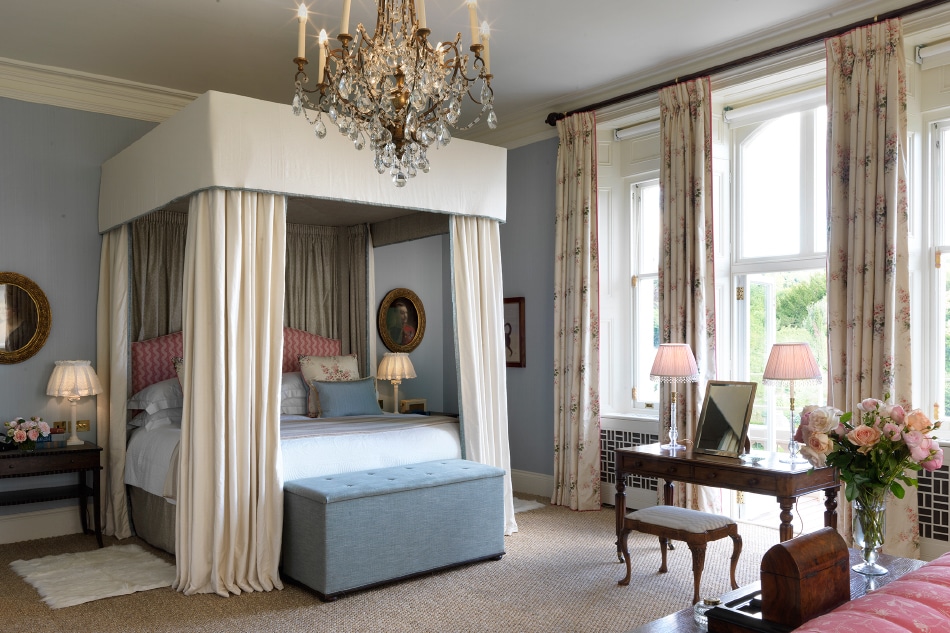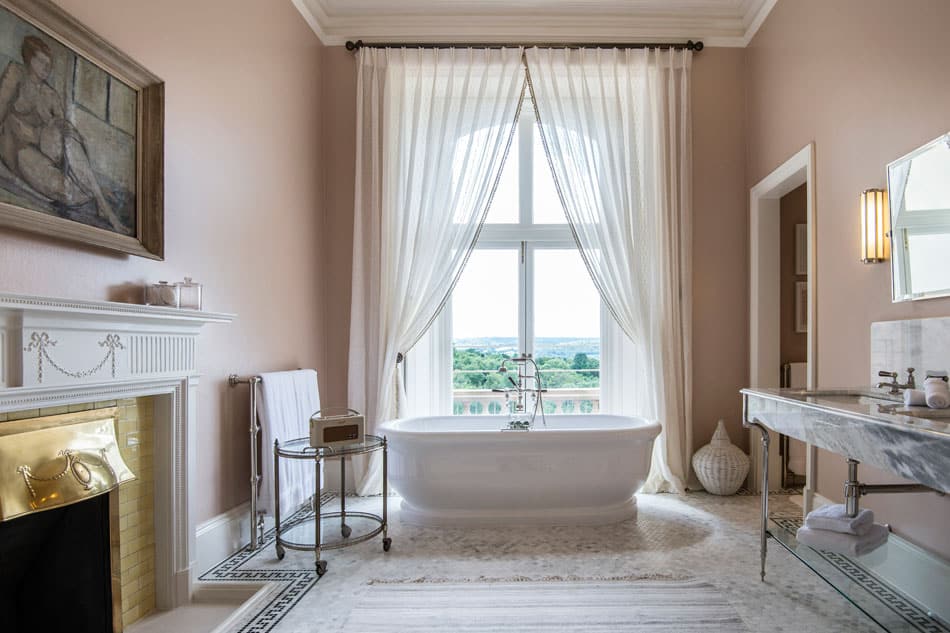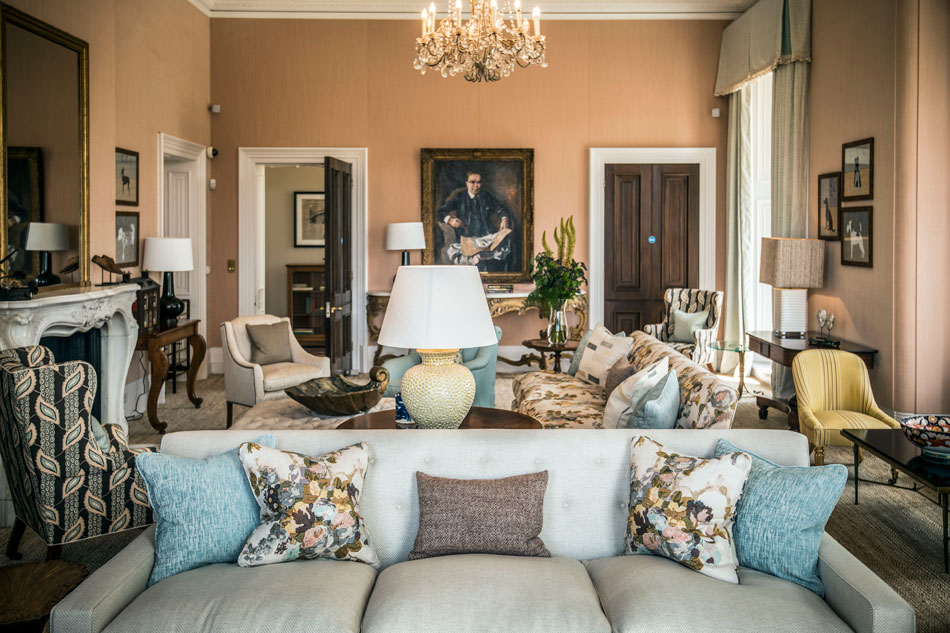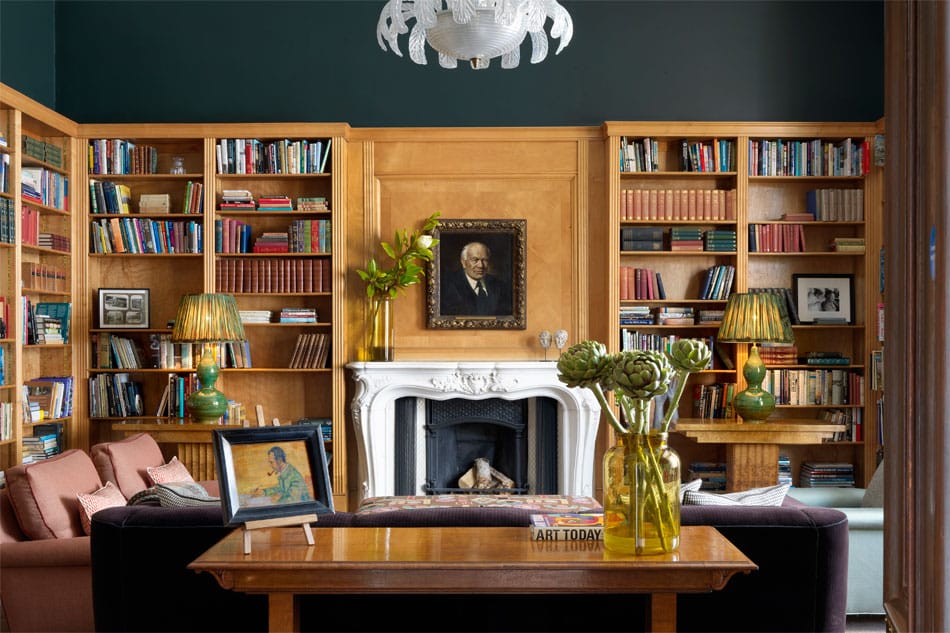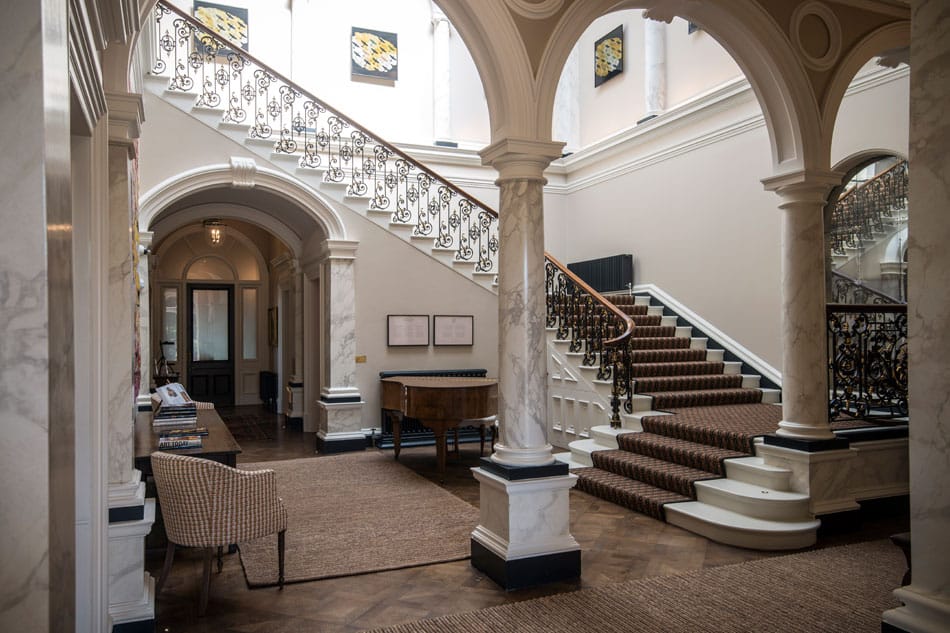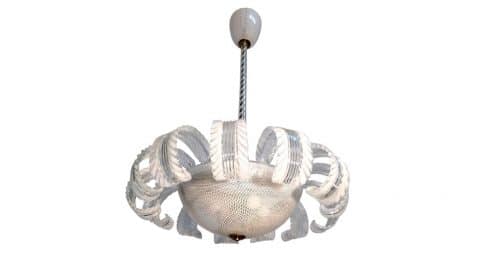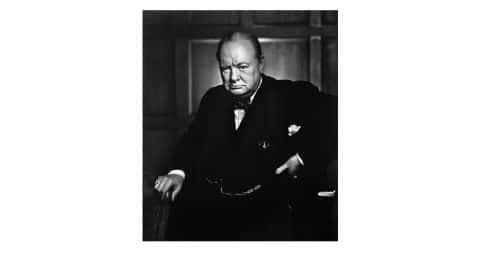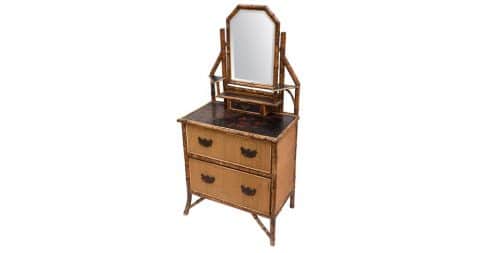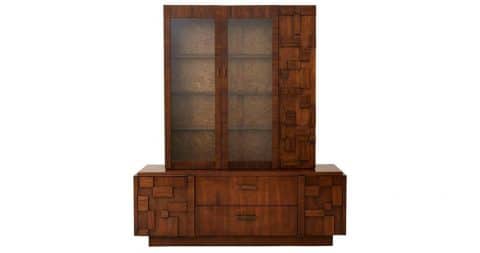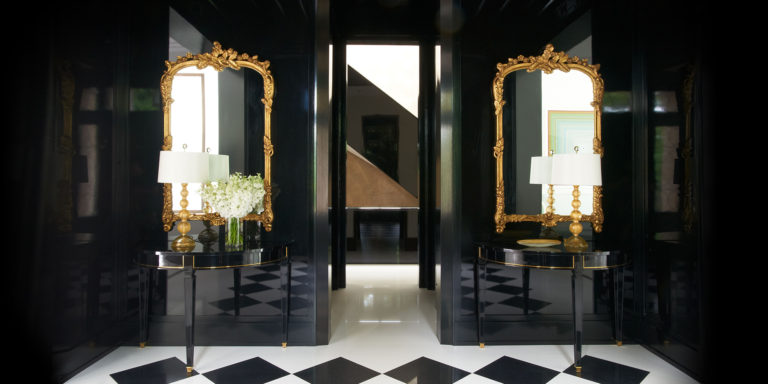
November 13, 2017British interior designer Susie Atkinson (above, portrait courtesy of Susie Atkinson) — known for her work in private homes and at Soho House properties in London and Berlin — has reimagined the main building of a mid-19th-century estate (top) as an 18-room hotel, the House at Beaverbrook. All images courtesy of Beaverbrook, unless otherwise noted
It sometimes seems like you can’t swing a brass curtain rod around the English countryside without hitting a family estate turned hotel. But rare are properties with true aristocratic provenance and rarer still ones with all-new decor by a top designer. The recently opened House at Beaverbrook, in Surrey, is one such rara avis.
Built between 1866 and 1870 for wool merchant Abraham Dixon and then known as Cherkley Court, the late-Victorian neoclassical mansion in the French château style later served as home to British-Canadian media tycoon William Maxwell Aitken, 1st Baron Beaverbrook. (He owned the Daily Express, at one point Britain’s best-selling newspaper.) During his 55 years of ownership, from 1910 to his death in 1964, Lord Beaverbrook hosted a who’s who of 20th-century movers and shakers, including Winston Churchill, Rose Kennedy, Jean Cocteau and Elizabeth Taylor. They all stayed and played at the 400-acre estate, which sits a little more than 20 miles from central London.
Opened in September after a top-to-bottom redo, the hotel has 18 guest rooms and suites, each of which takes its name, and some of its aesthetic inspiration, from one of these celebrity guests. Performing decorating duties was Susie Atkinson, who is regularly featured in British House & Garden’s influential triennial list of 100 Leading Interior Designers. Her soothing, classical and crisp style defines the rooms she’s done in houses throughout London and the British countryside. At Beaverbrook, she did up every guest room individually and also created the schemes for the House’s bar and Japanese restaurant, as well as its morning room, library, cinema, entrance hall and private dining room.
Having previously designed similarly residential-feeling interiors for Soho House properties in Berlin and London, Atkinson channeled the lavish look of grand houses from the early decades of the past century, interpreting it in a light-handed, lighthearted and light-filled way. Bold, playful prints, plenty of rich colors and plush materials mix and match in big-windowed rooms, creating an atmosphere as sumptuous as it is homey and eclectic.

Atkinson says she chose the floral fabric on the chairs in the dining room “because it is so fresh and very English, but also because it nods to Clementine Churchill’s dining room at Chartwell.” In this space, executive chef Taiji Maruyama, who worked previously at Nobu restaurants in Monaco and London, serves contemporary Japanese cuisine.
Part of an ongoing redevelopment of the estate undertaken by the hoteliers behind the Bel & the Dragon collection of English country inns, the House joins the 11-bedroom Garden House, designed by Nicola Harding, which opened last fall and includes a cooking school. Next up will be the Coach House Spa and Glass House Cottages, due to debut in 2018.
Here, Atkinson shows Introspective around the House at Beaverbrook, which the Financial Times called “fabulously lavish and fabulously enjoyable” and the U.K.’s Telegraph newspaper suggested might well be Britain’s coolest new country house hotel.

Like most of the hotel’s spaces, the morning room mixes new furnishings with art and antiques found in the house, as well as ones that Atkinson collected. “Here, we chose an array of fabrics that, although used in a formal setting, give an informal vibe,” Atkinson notes.
The Project
The brief I was given was to create a hotel that felt more like the home of an old acquaintance or a friend, a place where you would instantly feel relaxed, in surroundings that are glamorous, with a nod to the past, to romanticism and to beauty. It was important to me that the pieces in the House would look as if they had been gathered over several generations, would reflect the personalities of the occupants over the years and, in our increasingly international age, would be recognizably English.
The Inspiration
I focused very much on the 1920s through the 1940s — and especially the years that Lord Beaverbrook lived in the place. I was keen to reflect the glamour of F. Scott Fitzgerald’s Gatsby, overlaid with the allure of Mad Men. I have also always admired and been inspired by the work of Nancy Lancaster, the first of whose famed seven design rules states, “In restoring a house, one must first realize its period, feel its personality and try to bring out its good points.” I felt this was key to bringing the Art Deco features of the house to the fore.
The Palette
It was important to me to create a feeling of warmth, with a welcoming atmosphere, and I think the colors reflect this, especially in the entrance hall — a challenging north-facing space with no fireplace. The bedrooms are softer and prettier, with a more muted palette and a feminine feel. Many of the bedrooms also have upholstered walls in soft blues and pinks, using fabrics from Veere Grenney, Soane and George Spencer.
The Art of the Mix
I love nothing better than mixing old with new, and this was easily achievable at Beaverbrook. We inherited a few key pieces from the house — the lovely brass chandelier with pear-shaped drops that greets visitors in the entrance hall, for example, was something that we moved from the dining room. And it was hugely enjoyable sourcing books, objects, artworks and furniture to create an eclectic mix of Victorian and Aesthetic Movement items to sit comfortably side-by-side with the more modern artworks.

Of all the pieces Atkinson had custom-made for the house, the Parrot bar is the one she considers most special. “It is made in fluted, antiqued brass with a rich green glass top that was patinated to give it depth,” she says.
The Devilish Detail
I was fortunate that the project was long enough to allow me to design and create various bespoke pieces. Every bit of fringing, be it on a scatter cushion or added to an upholstered ottoman, every curtain style or piece of furniture was carefully considered. Nearly all the furnishings in the Parrot Bar were designed and made specifically for the house, and I am very pleased that all of them were made in the U.K., where we have such a wealth of talented craftsmen.
The Innovation
Although it is often not easy to preserve a sense of history in a building when combined with all the modern conveniences we expect today, we did create an antique brass TV stand that sits comfortably in the surroundings of each room. It did not feel at all right to have TVs on walls, and having railed against this, we had to come up with an alternative. We are very pleased with the outcome.
The Speed Bump
I was disappointed not to be able to extend or change the bookcases in the library, which seemed foreshortened and disproportionate in the room, but the planners took a firm line. On reflection, with the room now complete, I feel we have successfully overcome this by introducing a very rich dark green paint above the shelves, which brings the height down and helps reduce the void between ceiling and shelves. I sourced a wonderful 1930s Venetian cream-glass Barovier&Toso chandelier from the dealer Lorfords, in Gloucestershire. It looks stunning against the dark green backdrop.
The Custom Commission
We had lots of things made specifically for this project, from the cocktail bars in the bedrooms to the four-poster beds, the ottomans, coffee tables and dining tables. But I think the most special piece is the Parrot bar. It is made of fluted, antiqued brass with a rich green glass top that was patinated to give it depth. The bar is set off with a wonderful pair of large, fluted, glass and brass lamps with beautiful curved shades. All in all, it creates a feeling of great glamour and excitement. It feels like a cocktail-party room.

Of the Gerhard Richter tapestry hanging in the main entrance hall, Atkinson says, “This extraordinary piece is the focal point both as you come into the room and as you come down the staircase.”
The Vintage Find
I sourced very many antique or vintage pieces for this project: the pair of huge exotic-bird oil paintings in the bar, for example, and the antique brass birdcage, which came from an important house that had been used for television period dramas before ending up where it is today. It too came from Lorfords. I also was excited to find the 1940s wall clock in the Winston Churchill bedroom at a reclamation dealer.
The Pièce de Résistance
This is undoubtedly the exceptional Gerhard Richter tapestry that hangs in the main entrance hall. This extraordinary piece is the focal point both as you come into the room and as you come down the staircase. It sits comfortably with the wonderful series of stained-glass artworks created by Brian Clarke that frame the staircase.
The Room to Book
This is too tough to call! They are each a unique experience. If pressed, I would have to say it would be between the Elizabeth Taylor, Ian Fleming and Rose Kennedy rooms, but I have to say Somerset Maugham’s room in the attic is also a favorite. It has such wonderful views and appeals to the child in us all with its sloped ceilings.
The Comforts of Home
I think the library and morning room have the most relaxing and comfortable feel, with log fires, deep sofas and chairs, books and interesting pieces of art and sculpture. They are places to while away lazy afternoons or evenings. The added bonus is that there will be someone on hand to bring you afternoon tea or a welcome tipple!
Bring It Home
Channel the House at Beaverbrook’s look with items hand-picked by designer Susie Atkinson.



